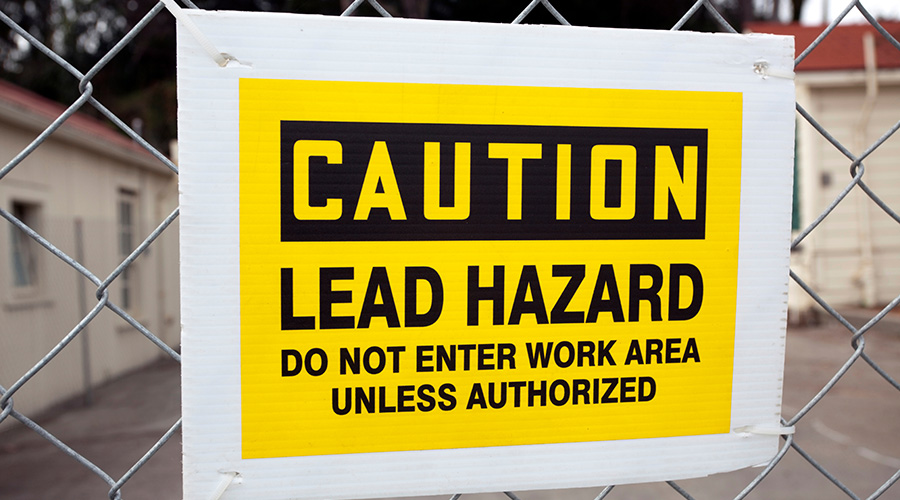Inventory Management
Education that helps users maximize the power of a CMMS also enables maintenance departments to take control of storerooms
Computerized maintenance management systems (CMMS) are designed, in part, to help maintenance and engineering departments effectively control the supply and flow of parts and equipment. But the software can only do so if managers, supervisors and front-line technicians fully understand the software's features and capabilities.
By developing a comprehensive training program, managers can ensure that supervisors and technicians fully use the inventory management capabilities of a CMMS.
Identifying key training topics, carefully considering the role of a CMMS developer in providing training, and setting up systems that measure the effectiveness of training are essential steps managers will need to take to maximize the organization’s investments in the CMMS and the accompanying training.
Training Topics
The key topics addressed by inventory-management training relate directly to inventory objectives and policy goals that managers set. The main objective of inventory management should be to deliver high availability and low cost — that is, providing all needed parts and materials at a reasonable cost.
The emphasis on availability does not mean high cost. Instead, it means that both high availability and low costs are achievable, not mutually exclusive. When one of these objectives becomes a priority to the exclusion of the other, however, inventory programs get into trouble.
For example, if management says, “All work orders must be completed on the day they are requested,” then material costs will skyrocket as maintenance supervisors scramble to cover every unknown future need. Conversely, if management says, “The backbone of our maintenance system will be scheduled predictive and preventive maintenance, completed on time,” then supervisors will place a greater emphasis on anticipating maintenance needs, and the department will receive fewer emergency requests.
The latter approach keeps facilities fully available and operational for occupants’ scheduled activities. Supervisors can plan for and order material and spares just prior to need, rather than storing them for long periods, “just in case.” The anticipation approach also increases availability, reduces inventory cost, and provides users with a highly reliable, safe and secure facility.
The Developer’s Role
Generally, a training process is divided into two phases: threshold learning — the first exposure to basic fundamentals — and reinforcement learning — the repeated exposure to various examples and practice, as well as advanced applications learned over time.
The roles of CMMS developer and any independent training provider are to develop user understanding of the system, using both basic training and specialized training to cover unique needs of each user.
Software developers in some cases have received complaints that their training too often follows a canned lesson plan and doesn’t adequately address specific user needs. Managers can avoid this potential training pitfall by examining the department’s training needs and insisting that developers provide comprehensive and seamless training based on those needs.
Managers can best achieve this goal by requiring that developers provide both basic initial training, which can be canned for the most part, and subsequent ongoing, customized training after the users have become familiar with the basics.
Another option is to have the developer provide the basic training, then bring in an independent trainer to provide the customized, ongoing training to address specific needs. One example of this approach uses a two-step solution.
First, the CMMS developer explains the basic modules related to inventory management in a classroom setting for all users, each of whom uses a workstation to navigate through the program. Usually, the developer also provides special training for the system administrator, who can use the training to set up user accounts, passwords and permissions to access various modules.
Second, the developer or independent training provider delivers ongoing training and coaching in setting up an inventory-item-numbering system and preparing inventory item masters. This complex step occurs over a longer period of time, but it is the key element in a good CMMS inventory module.
Often, managers are tempted to shortcut this process by, for example, filling in only the item number, description and a few other fields on the master. As a result, many of the CMMS’s best functions and reports become unusable because when the software’s report-writing function searches the database, it finds nothing but empty fields. Another essential topic during initial training relates to ongoing help in implementing bar coding.
Front-end help with these two parts of the structure — targeting shop management with no experience in these matters — will result in a much smoother, quicker and better implementation, and the payback to the department and organization will be immense.
CMMS users also can take advantage of developers’ help desk for ongoing guidance and support. Users can access to subject-matter experts by calling or e-mailing the developer’s customer support group. The service usually is available 24/7/365, and if bugs in the software arise, the developer often can tweak the system quickly and online.
Measuring Effectiveness
The place to start preparing a training program for inventory management is to review the stores attendant’s job description, which listed in the article on page 29. Often, this initial review will indicate areas to update, including new duties, especially if a new CMMS inventory module has been introduced.
At a minimum, this training should cover all of the attendant’s duties. This approach will ensure a seamless relation between the CMMS component of the duties and the shop-floor component.
For example, using work-flow training aids, CMMS developers can create practical process-flow training exercises for creating a new item master, ordering and receiving parts, entering the quantity into inventory, applying bar codes, and dispersing parts for a work order.
Measuring the effectiveness of the inventory-management function is greatly enhanced when the department properly uses the CMMS’s inventory functions. With a complete and up-to-date database of item masters and good control of receipts and withdrawals, managers can run control reports instantly by querying the database to sort the information needed.
Armed with this information, managers will be able to identify problem areas and identify the needed steps — perhaps including more training — to address the problems.
Two types of reports are crucial: stock-outs and total value of inventory on hand. Stock-out reports show how well parts and material availability is managed, and total value shows how well costs are managed.
In most software, users can run standard reports already included and can create new reports. Other reports that extend the usefulness of the software include: a parts list by stores location; allocated items and quantities; a parts list based on the need to reorder; and a list of locations where parts are used.
Training on inventory management also should include instruction on running reports and creating new queries. These two capabilities will enable managers and supervisors to ensure the system performs as required.
In the end, managers can use two measurements to evaluate whether their departments’ inventory management is improving — and whether training has benefited the organization. They are the reduction in material-related downtime cost and the reduction in material-inventory value.
Managers who start the training-development process with a sound objective and policies, develop good procedures, train the users well, and execute the game plan, will be more successful in ensuring that the CMMS’s inventory management module delivers excellent material availability and contribute to high operating efficiency by holding the line on costs.
Job Description as Training Blueprint
Developing a training program to improve inventory management starts with understanding the typical duties of the stores attendant. Here is a sample list of these duties:
-
Preparing and submitting requisitions in a timely manner for approval by management.
-
Receiving material and supplies from vendors. This includes checking quantities, specifications and condition against the purchase order, noting receipts, back orders, complete orders, and preparing receiving documents so vendor invoices can be honored.
-
Putting away items. This task involves manually storing the items in the proper location, scanning the item-number bar codes, and entering the quantity to update the inventory record. It might require operation of walking or riding material-handling equipment.
-
Issuing materials. When technicians present work orders at the stores window, the stores attendant picks the items from the bins, scans them, enters the quantity issued and work order number, and issues the materials, obtaining the employee’s signature or bar code for receipt.
-
Handling returns. The attendant places returned materials back in inventory, adjusting the inventory record accordingly.
-
Overseeing tool control. Company tools are issued and returned, just as materials are. The stores attendant checks tools out and in, operates the tools to ensure they are in good condition when issued and again when returned, and notifies planning if tools require repair. The attendant might sharpen tools and make other minor adjustments.
-
Preparing work requests for repair of stores-related equipment.
-
Monitoring inventory levels. The stores attendant runs usage reports, out-of-stock reports, and special reports, analyzes these records, recommends corrective action, and implements the improvement actions.
-
Preparing item masters. The attendant prepares item masters for new inventory items and removes the obsolete masters.
— Thomas Westerkamp
|
Related Topics:











